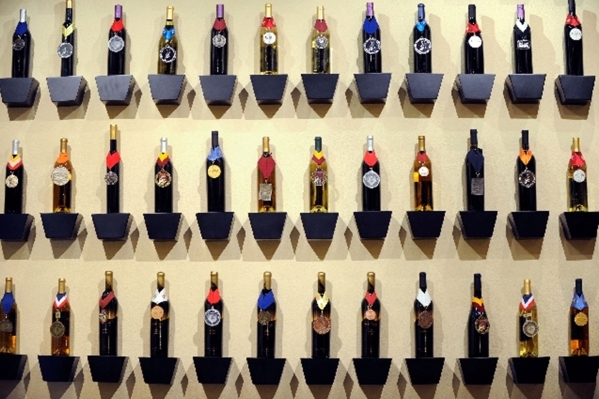Wine industry takes root, grows in Nevada

Nevada’s emerging wine industry is expanding into new areas, offering winery visitors different experiences and opportunities for agritourism.
The Silver State joins a national trend toward proliferating vineyards and wineries. In the drought-prone Southwest, vineyards are rapidly replacing traditional crops that use much more water.
Just 60 miles from Las Vegas, Pahrump Valley Winery is Nevada’s first and largest winemaker. Follow state Route 160 over Mountain Springs Pass into Pahrump Valley. As you enter the town of Pahrump, turn right at the first stoplight onto Winery Road. The entrance to the winery is about a half mile from the highway. Developing since the 1990s, the Pahrump facility offers year-round wine tours, a tasting room, a gift shop and Symphony, a “white-linen” restaurant open for lunch and dinner. Dining reservations can be made at 775-751-7800.
The handsome winery building with wide porches and attractive grounds makes an appealing setting for special events such as weddings and parties. The winery annually sponsors the Pahrump Grape Stomp, a crowd-pleasing event set for Oct. 3 and 4. Two-person teams stomp on a barrel of grapes for two minutes. The winning team is the one that produces the largest amount of juice. The event features wine, beer, food, crafts, live music, wine tasting and wine sales. Tickets are $7 per day in advance and $10 at the door. Stomping teams should register well in advance. The restaurant will be open only for lunch that weekend.
The first Pahrump Valley vineyards suffered depredations from native desert creatures and wild horses. For a few years until the vines started producing, the winery bought grapes from California.
Now the winery bottles much more of its own product, called estate wines, many of them award winners. It produces both red and white wines and processes grapes from nearby Nelson Vineyard and School Lane Vineyard in Amargosa Valley and Veronica Vineyard in Crystal Heights north of Pahrump. School Lane Vineyard produces grapes for Nevada’s first cabernet sauvignon. Pahrump Valley Winery also promotes other Nevada-grown products, such as the fine light olive oil from 1,000 trees growing in Amargosa Valley, available in the winery’s gift shop.
The Pahrump Vineyard also processes grapes from one of Nevada’s newest vineyards on the Bill Hartman Ranch near Dyer in Esmerelda County’s remote Fish Lake Valley. The scenic valley near Boundary Peak on the Nevada-California border offers fishing, hot springs, hiking, camping and access to ancient bristlecone pines in a high preserve in the White Mountains. The Queensland Vineyard on the ranch, which grows alfalfa for California dairies, produces grapes from eight kinds of vines planted at 5,000 feet elevation in 2009 and harvests lavender from four varieties in a garden near a bed-and-breakfast opened in 2013. Meals served at the three-room Queensland Inn are made from locally sourced foods.
Nevada’s second-oldest winery, Tahoe Ridge, recently moved to Carson City from Minden. The new facility includes a bistro, marketplace and tasting room featuring olive oils and vinegars as well as wines. The winery produces vintages from its own vineyard and from California grapes. The popular facility schedules several special events annually.
Churchill Vineyards near Fallon was established in 2001 as part of the historic Frey Ranch, homesteaded in the Lahontan Valley in 1918. After the vineyard tested 10 varieties likely to prosper in the area, four succeeded to harvest. The facility bottled its first Nevada wine in 2004.
The expanding vineyard grows thousands of vines, producing white estate wines and other vintages. Churchill Vineyards also produces brandy, port and other spirits as Nevada’s first legal distillery. To arrange a tasting, call 775-423-4000. The winery will be part of the sixth annual Fallon Tractors and Truffles farm-to-table event Sept. 26.
— Margo Bartlett Pesek’s Trip of the Week column appears on Sundays.